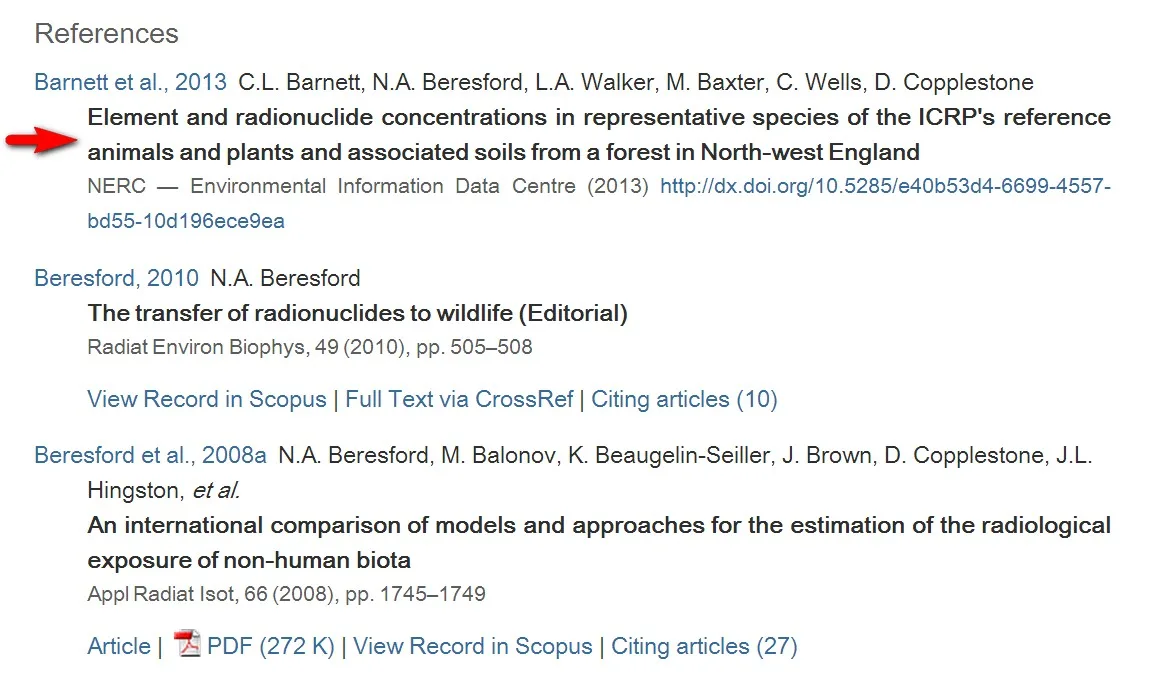Data citation
For data to be discovered and acknowledged it must be widely accessible and cited in a consistent and clear manner in the scientific literature. To achieve this, Elsevier has implemented the Joint Declaration of Data Citation Principles opens in new tab/window for its journals. This will help make research data become an integral part of the scholarly record, properly preserved and easily accessible, while ensuring that researchers get credit for their work.
How data citation works
The data citation is included in the standard References list of an article, and treated on equal footing with article citations. That also means readers will enjoy the same benefits as for article citations, including one-click deep links to the referenced material and the ability to quickly jump to the point in the article where this work was first cited.
Elsevier has implemented the FORCE 11 data citation opens in new tab/window principles in all of our journals. This means that authors are encouraged to include data citations as part of their reference list and that we have altered our production and publication systems to process this form of citation.
As with article, book and web references, datasets should be cited at the relevant place in the manuscript. In addition, a reference should be added to the reference list of the article. The reference should contain the relevant elements to provide information about a dataset and can be formatted in the same way as other references. If you add [dataset] before the reference, you’ll ensure that our systems will recognize it as such. For more information, please check the reference section in the Guide for Authors.
For example, the diagram below shows a reference list from the article "A new approach to predicting environmental transfer of radionuclides to wildlife: A demonstration for freshwater fish and caesium" opens in new tab/windowpublished in Science of the Total Environment in 2013. The first reference uses a proper data citation, including the key bibliographical information for the data set and using a data DOI as unique, persistent identifier.

Elsevier remains involved in developing technical solutions and creating guidelines to implement the citation principles, both within Elsevier and beyond. We encourage you to endorse these principles by visiting the FORCE 11 website.
Joint Declaration of Data Citation Principles
The FORCE11 data citation principles were launched in 2014 with the aim to make research data an integral part of the scholarly record. The principles recognized that a critical driver for increasing the availability of research data was to ensure authors receive credit for sharing through proper citation of research data. Elsevier was involved in drafting these principles and, along with many other publishers, data repositories and research institutions, endorsed them as an industry standard. The data citation principles are outlined below:
Importance Data should be considered legitimate, citable products of research. Data citations should be accorded the same importance in the scholarly record as citations of other research objects, such as publications.
Credit and attribution Data citations should facilitate giving scholarly credit and normative and legal attribution to all contributors to the data, recognizing that a single style or mechanism of attribution may not be applicable to all data.
Evidence In scholarly literature, whenever and wherever a claim relies upon data, the corresponding data should be cited.
Unique identification A data citation should include a persistent method for identification that is machine actionable, globally unique, and widely used by a community.
Access Data citations should facilitate access to the data themselves and to such associated metadata, documentation, code, and other materials, as are necessary for both humans and machines to make informed use of the referenced data.
Persistence Unique identifiers, and metadata describing the data, and its disposition, should persist — even beyond the lifespan of the data they describe.
Specificity and verifiability Data citations should facilitate identification of, access to, and verification of the specific data that support a claim. Citations or citation metadata should include information about provenance and fixity sufficient to facilitate verifying that the specific time-slice, version and/or granular portion of data retrieved subsequently is the same as was originally cited.
Interoperability and flexibility Data citation methods should be sufficiently flexible to accommodate the variant practices among communities, but should not differ so much that they compromise interoperability of data citation practices across communities.